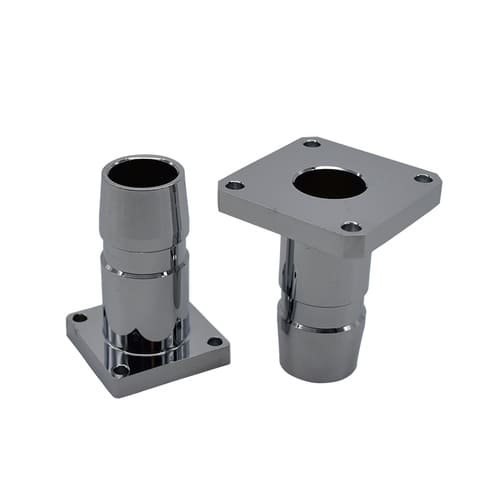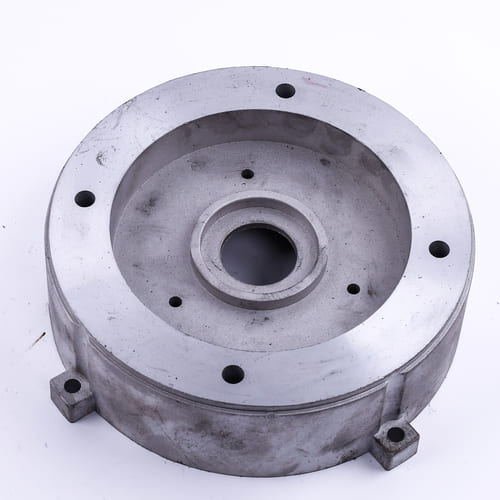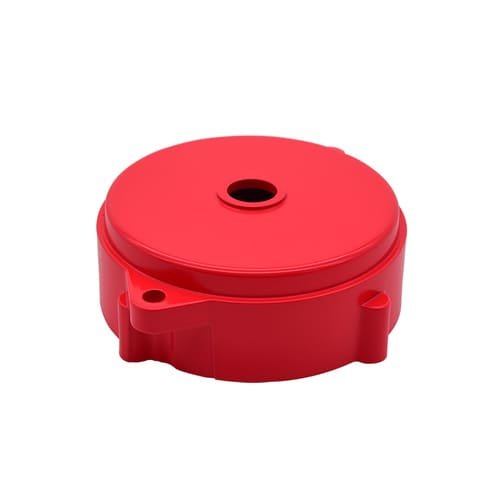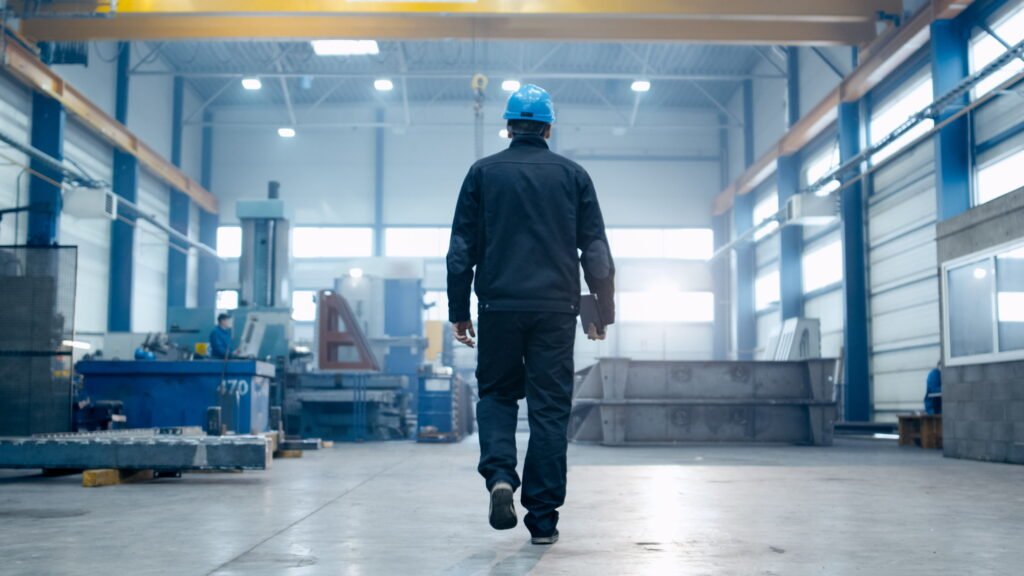When it comes to surface finishing, there isn’t just one right choice or process. There are different types and you need to consider some factors when choosing. you can find out everything about it in this article.
What Is Metal Finish?
Anodizing is an electrochemical process that involves immersing aluminum splints in a chemical bath. This adds a protective coating on the aluminum exterior that can also change the appearance.

Why Do We Use Corrosion Resistance Metal Surface Treatment?
Anodizing is typically used for applications where your aluminum will come into contact with elements or where you require a highly professional and clean piece of aluminum.
Typically, corner guards, wall inserts, and shop fixings are anodized for both appearance and protection. Popular anodizing colors include clear satin-etched and anodized, black, copper, nickel, and brite dip.
Die Cast Parts with Slight Surface Imperfections
Metallic painting is a similar process to applying paint over anything else. Adding a coat of wet paint to an aluminum surface can change the look and increase durability a bit. Typically, metal finishers will use a sprayer or pump rather than a brush or roller to ensure an even and smooth finish.
Powder coating gives a similar appearance to paint, however, is much more durable than standard wet paint.
The powder coating processes for an aluminum extruder involve coating the metal in a layer of pigment and electrostatically charging it, then heating the extruder in a special oven to melt the powder to create a layer. Smooth finish and even distribution.
Metal Finish Vs Surface Finish for Aluminum Splints
Sublimation consists of a base powder followed by a thin film with a pattern on it. This film is then removed and as the metal cools, the pattern will appear. The most common sublimation creates a wood-like pattern but can be altered to achieve any pattern or design you want!
Stacked partitions, or interlocking partitions, are often finished with sublimation to look for a wood partition solution while maintaining the durability of an aluminum solution.
Plating involves coating an additional layer of metal onto extruded aluminum or another metal. When plating things, the terms gold plating or silver plating often come into play. This finish can be applied with electric current (electroplating) or with self-catalyzing chemicals (non-electroplating).

Surface Finishing or Mechanical Finishing
Surface finishing refers to processes that alter or remove a layer of metal being finished. This is usually done to improve the look or function depending on the application.
Common methods for decorative surface finishing and aluminum extrusion include brushing, grinding, polishing, milling, and blasting.
Typically, a brushed aluminum finish or grain finish is applied before anodizing using equipment specifically designed to brush the material in a uniform or straight pattern.

The material is passed through a series of brushing wheels to remove a thin layer of metal that creates a uniform pattern or veining along the surface.
Polishing is often used when the extruded aluminum has some knife marks or surface scratches that need to be removed for a cleaner appearance. Clean or stained anodizing on brushed surfaces creates a very durable and consistent finish.
Die Cast Aluminum Surface Finish
Grinding the aluminum splints down smoothest the surface of the material within reach. There are many types of grinders and methods, each of which can be expertly used to produce the desired smoothness in your material.
Noticeable Surface Imperfections Include:
- functional grade error
- die caster round sharp edges
- abrasive particles
- rough surface electroplating process
- Poor powder coating surface finishes

Milling, or mill finish manufacturing, is when metal is passed through a rolling mill, extrusion die, or drawing process. This is the basic finishing step of extruded aluminum and is what is used in the metal finishing process at Castingod.
Factory surface finish is often rough to the touch, showing splints and other blemishes associated with operating the extruder.
Blasting is a surface finishing method that both cleans and finishes metals. The abrasive blasting process involves the use of a large amount of pressure to push particles onto the metal surface.

Common media used in abrasive blasting include sand, glass, steel grit, water, and dry ice.
It is the final coating step in the manufacturing process. The finish is used to provide aesthetics and protection to the metal part.
It is also applied to reduce surface roughness beyond the capabilities of machining operations for die cast parts that must fit or seal. In summary, various types of metal finishing processes are used for different purposes.
Benefits of Die Cast Surface Finish
The finishes guarantee some benefits to metallic surfaces:
- ️greater durability in surface performance
- corrosion resistance and provides a smooth surface
- chemical resistance
- electrical resistance
- abrasion resistance
- friction reduction
- transformation into a conductive surface
- Pleasant and decorative coatings
6 Types of Die Casting Surface Finish
As each metal part has its requirements, the type of metal finish selected can greatly affect its performance and durability.
Below you can see which the main types of surface finishing are, as well as in which metals each type is most applied and in which industries they are used.
Polishing
Polishing can be done manually or automatically. This die-cast process reduces surface roughness and also increases the luster of metal, as reflected light is less scattered on brighten surfaces.

Thus, it is a frequently employed method to improve surface aesthetics.
Metals: applied to steel, copper, brass, nickel, aluminum, silver, and gold.
Applications: carpentry, foundry, sawmill, goldsmith, watchmaking, dentistry, among others.
Brushed
Using an abrasive belt or wire brush, this die-cast process involves physically brushing the piece to achieve a smoother exterior.
This surface finishing technique can dramatically improve surface imperfections but may require additional cleaning.
Metals: stainless steel, aluminum, and nickel.
Applications: automotive industry, household appliances, civil construction (architectural parts), etc.
Anodizing
This is an electrolytic passivation process. The metal is immersed in a series of tanks and, in one of them, the anodic layer is developed from the metal itself.
Anodizing provides a highly durable finish to the metal it is applied to — most often aluminum.
Metals: aluminum and titanium.
Uses: automotive industry, aeronautics, construction, decoration and lighting, electronics.
Electroplating
Electroplating passes an electric current through an electrolyte solution. Two electrodes are placed in the solution and connected to a battery source which connects an electrical circuit between the electrodes, electrolyte, and battery.

Electricity flows through the circuit, breaking down the electrolyte that causes metal atoms to form at one of the electrodes.
The electrolyte can consist of whatever type of coating your final product needs.
Metals: various metallic materials especially nickel.
Applications: jewelry and watches, etc.
Powder coating in Die Cast Surface Finishing
Most industrial coatings come in liquid form, but powder coatings also exist. They provide greater thickness than liquid coatings.
Different pigments, flow modifiers, and other additives can be added to the powder to provide the desired protection and aesthetic appeal.

Typically, a spray gun is used to apply this die casting surface finish. The die cast components then enter a curing oven that heats the components, causing a chemical reaction that bonds the coating and substrate.
Metals: aluminum.
Uses: poles, railings, windows, doors, bicycles, golf clubs, electrical items, light fixtures, and antennas, among others.
Black Oxidized
The electrochemical conversion coating process generates black oxide to provide greater protection to a product. Gives a black or bluish color to the metal. It can only be performed on ferrous metals.
Metals: steel and cast iron.
Uses: weapons industry.
How to Choose the Best Metal for Die Cast Surface Finish?
The best die casting surface finish will meet the requirements of the manufactured product. Below are some factors that will help you when choosing the best one for your demand.
Product Look
As seen, each finish is made by a process that gives the metal a different look. So, when choosing the best die casting surface finish, it is essential to consider the aesthetics required for your product.

Production Speed
How fast do you need the finished product? Each technique has its own surface finish application time cycle.
Metal Hardness
Generally, harder metals require more intensive finishing techniques. As such, they may need harder abrasives than softer metals.
Castingod Is a Leading High-Pressure Aluminum Die Castings Manufacturer
We develop the entire foundry project, which ranges from the manufacture of models to the production of die cast parts within the specifications of the desired standards.
We work to serve our customers well, provide high-quality products, and aim at the best standard of die casting services.
With galvanic surface finishing, we can realize many variants of metal finishing. Decorative electroplating, professional color coating and more – no matter what type of surface finishing is involved, we implement each of your wishes professionally and cleanly with a high level of expertise and a sense of detail.

We Advise the Best Die Cast Surface Finishing Techniques
We would be happy to advise you on the possibilities and finishing techniques. This advice is important because which process used for surface finishing depends on the intended use of your product.
Is it a decorative coating or is it coated for functional reasons (e.g. to protect against corrosion)?
Depending on the requirements, we take different directions (decorative electroplating or functional electroplating). We can nickel, zinc, chrome, phosphate, passivity, and much more your product.
No matter which process you choose, your products are guaranteed to be in the right hands at Castingod.
Why Surface Refinement at Castingod?
We manufacture your desired decorative or functional surface in high quality and cooperation with a powerful partner. Each die cast surface finish process offers a variety of variations that meet specific visual or functional requirements. To achieve perfect results in surface finishing,
we use the know-how and expert staff we have acquired over many years. We would be happy to advise you in detail.








